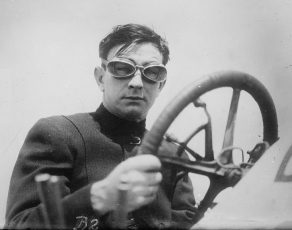
Bob Burman
Named "World's Speed King" in 1911
Nationality: United States
Born: April 23, 1884 Imlay City, Michigan
Died: April 18,1916 Corona , California 32 Years
FLINT, Michigan — “Wild” Bob Burman died doing what he loved the most — auto racing.
The Imlay City native was an open-wheel pioneer, setting numerous speed and victory standards in the early 1900s.
The former Flint resident died in a road race on April 8, 1916 in Corona. Calif. He was 31 years old. Ironically, his tragic death led to the introduction of new safety equipment.
His friends Barney Oldfield and Harry Miller — both pioneers in racing and car building — joined forces and built a race car that incorporated a roll cage inside a streamlined driver's compartment that completely enclosed the driver.
The car they constructed was called the Golden Submarine.
“It's very sad he had to die like he did,” said Clio resident Ben Wright, whose wife, Laura Wright, is Burman's great-granddaughter. “He was instrumental in every phase in what they are doing today. The roll cages, the safety belts, the neck restraints, they didn't have any of it. The racers of today have benefited from what Bob went through.”
Burman was recently honored for his achievements when he was inducted into the National Sprint Car Hall of Fame on June 4 in Knoxville, Iowa.
“His life was dedicated to creating a car that would be fast and furious,” Laura Wright said. “He was very innovative. I’m sure (his innovations) helped progress cars to where they are today.”
Burman’s racing career started to take off in 1906 while he was working as a “head tester” for the Jackson Automobile Company.Imaly City native and former Flint resident Bob Burman driving his Blitzen Benz race car in the early 1900s. Burman was inducted into the National Sprint Car Hall of Fame on June 4, 2011.
With a loaned car from the company, he captured a 50-mile race in Grosse Pointe. Later that year, he finished first in a 24-hour endurance contest in St. Louis, beating his competition by 82 miles.
Two years later, while he was working at the Buick plant in Jackson, William C. “Billy” Durant asked Burman to form a Buick Racing Team.
Among others, the team Burman put together consisted of Arthur and Louis Chevrolet.
With Burman leading the way, the team was one of the best in the country, taking 500 trophies during its four-year existence from 1908-11.
Burman captured the first feature automobile race at Indianapolis Motor Speedway — Prest-O-Lite 250 — on Aug. 19, 1909 en route to finishing in fourth place in the American Automobile Association final standings.
Imlay City native and former Flint resident Bob Burman
“They absolutely thrashed the competition from one end of the country to the next,” Buick Racing Team historian Terry Dunham said. “They were an incredibly aggressive group and they were extremely knowledgeable when it came to building a race car. They were miles and miles ahead of their time.”
After the team disbanded, Burman continued to further his career.
He set a world land-speed record of 141.732 mph on April 23, 1911 in Daytona, Fla. before taking 19th place in the first Indy 500 on May 30.
Burman competed in five Indy 500s overall, with his best finish being sixth in 1915. His best season was arguably 1912 where he notched 41 top-two finishes in 43 starts, including 33 checkered flags.
He was credited with holding 13 records at the time of his death.
“He was a natural competitor from both an attitude and coordination standpoint,” Dunham said. “He had an extremely competitive and aggressive attitude. He was a natural driver.”
From the Michigan Motor Sports Hall of Fame (Facts to be confirmed)
Bob Burman
(1884 - 1916)
Inducted into the Michigan Motor Sports Hall of Fame in 1983.
When most people think of the early days of auto racing, they automatically think of the Barney Oldfield name. However, if you really want to take the time to investigate the factual information available, you would come up with an entirely different name, that of Bob Burman.
Born in Imlay City, Michigan on April 23, 1884 and later moving to Jackson, Bob became an employee of the Jackson Automobile Company. At the tender age of 17 he won his first race, a local 5 mile match race. In 1906, his employer loaned him a car, which he entered and won a 50-mile race in Detroit.
Next was a 24 hour endurance race at St. Louis, MO. Teaming up with Ernest Kelly, Burman not only won, but beat the competition by 82 miles, driving 22-1/2 hours himself.
Burman's star was rising rapidly and now the Buick Company signed him as a salaried factory driver. Bob won the first race he was entered in, under the Buick colors, the 187-mile Garden City Sweepstakes on Long Island.
February 1909 found him winning the 100-mile Mardi Gras Festival event in New Orleans with a record time of 1:42:39.4. In July at Columbus, Ohio, Bob bettered the mark with a 1:41:00 clocking for the 100 miles.
The Indianapolis Motor Speedway was opened on August 1921, 1909 with a series of races held. Burman won the inaugural race, the 250-mile Presto-O-Lite Trophy dash, beating out Louis Chevrolet. In his first full season with AAA, Bob finished 4th with 1,000 championship points among 70 drivers.
1910 at Indianapolis, Burman won the Speedway Helmet in a 10-mile sprint, which paid him a $50 weekly salary as long as he held it. In July he returned to Indianapolis and romped off with the G&J Trophy race, beating Louis Chevrolet. The following day Bob set a record of 1:23:43, to win the Remy Grand Brassard trophy in a 100-mile race. Burman's year was closed out by adding the 20 & 50-mile beach records of Jacksonville, Florida along with one-hour record of 81.65 miles.
On his 27th birthday, April 23, 1911, Burman celebrated by smashing the one-mile record at 141.73 MPH breaking the old record, set by Barney Oldfield in the same car by 10 MPH.
A month later, Bob Burman was named "World's Speed King," with a $10,000 crown covered with jewels when he broke the track record at the Indianapolis Motor Speedway, with a time of 35.25 seconds (102.127 MPH). On July 4, 1911 at Brighten Beach, N.Y., a track near Coney Island, a crowd of 15,000 watched Burman set a new world dirt track record of 48.72 seconds.
Bad luck seemed to dog Burman in 1912. Running in 2nd place at the Indianapolis 500 on the 153rd lap, his car blew two rear tires simultaneously and flipped, putting him in the hospital for a week. Labor Day found Bob back at Brighten Beach, New York breaking the world dirt track record again at 48.85 seconds. The car was taken to the beach at San Diego, California and on December 26th Bob was clocked at 129 MPH before his car burst into flames and he drove it into the ocean to extinguish the fire.
Burman excelled on the dirt in 1912. Out of 43 races entered, he won 33 and was 2nd 8 times, earning him the "Driver of the Year" award.
On his way to Indianapolis, Bob stopped off at Oklahoma City, when on April 29, 1915 he drove the last 100 miles of a 200 mile race with one broken goggle and a splinter of glass imbedded in his eye, causing him great pain, but still winning the race.
That same year found Burman finishing 6th at the Indy 500, his best finish there.
Bob Burman had had a brilliant career and was still in his prime when on the fateful day of April 8, 1916, running in a race through the streets of Corona, California his car flipped as he was pushing it to the limit to catch the leader. In his prime at age 32, Bob Burman paid the supreme sacrifice in the sport of auto racing. He gave his greatest possession, his life, for his greatest love, that of racing.
Bob Burman
Wild Bob Burman earned his nickname because of his aggressive, all-out, driving style. His habit was to win or break down, and just winning wasn’t enough: Wild Bob wanted to rewrite all the record books.
Born in Imlay City MI on 23 April 1884, Burman moved to Flint to paint wheels for the Durant-Dort Carriage Company. His mechanical skills were apparent, and he soon became a handyman. Still a teenager, he was transferred to William Durant’s Jackson Automobile Company as a test driver. He won the first race he entered. In 1906, he claimed victories at Detroit, Grand Rapids, and a twenty-four-hour St Louis marathon, in which he held the wheel for all but an hour and a half. That determination and conditioning characterized Burman’s racing career.
When Durant moved the Buick Motor Company to Flint, he persuaded Burman to captain the racing team, including Louis Chevrolet and Louis Strang. Burman won the first race the team entered, a 187-miler on Long Island. From 1906 through 1910, the Buicks collected more than five hundred trophies. In the inaugural Indianapolis meet, Burman took the 100-mile Remy-Brassard trophy, ahead of Joe Dawson, Ray Harroun, and Arthur Chevrolet (also in a Buick).
In 1911, Wild Bob piloted the Blitzen Benz to a world record 141 mph at Daytona, a mark that lasted until 1919. At Indianapolis, he established a closed-course record, and, later that year, completed the triple by setting the dirt track record at Brighton Beach NY. Although a horrible wreck in the 1912 Indianapolis 500 left Burman hospitalized, he returned to win thiorty-three of the forty-three races he entered that year, and finished 2nd in another eight.
Second place wasn’t enough. For the 1914 season, Burman partnered with W.A. Thompson from Battle Creek MI, who owned the Wisconsin automobile company. Burman built “Centipedes,” powered by Thompson’s version of the sixteen-valve twin cam Delage engine, for himself and Louis Disbrow. When both Wisconsin engines failed in the Indianapolis 500, Burman became disillusioned and purchased a 5.65-liter Peugeot powerplant.
At the 1915 Point Loma race in San Diego, Burman cracked a crankshaft and took the engine to carburetor designer Harry Miller and machinist Fred Offenhauser. Accounts differ, but Burman appears to have offered Miller between $2000 and $4000 (a large sum at the time) to repair and modify the engine. Burman needed the displacement reduced to the Indianapolis 5-liter formula. Working with draftsman John Edwards, Burman, Miller and Offenhauser constructed a plan to incorporate lightweight alloy cylinders, tubular connecting rods, and a pressurized dry sump lubricating system. Offenhauser personally machined most of the components, including the replacement crank. Miller cast a 293 cid block to meet Indy requirements. Rebuilding the Peugeot engines of Burman and Eddie Rickenbacker was Offenhauser’s first chance to contribute directly to one of Miller’s designs. The Burman engine was the first known use of Miller’s “Alloyanum” and Miller and Offenhauser produced engines.
Burman managed to remove another 200 pounds from the chassis, and unveiled the new car at Ascot (CA) in April, lapping Disbrow and Earl Cooper, in similar Peugeot powered racecars. He also won at Oklahoma City with the larger engine.
In the 1915 Indy 500, Burman cracked an oil line and spent several laps in the pit replacing it. However, he returned to place 5th, his best finish in the May classic. Wild Bob triumphed again at Providence RI, Burlington IA, and Oklahoma City. In the off-season, he had Miller again refurbish the engine, then, won at San Diego and finished 2nd at Ascot.
In April, on a road course Corona CA, Burman battled Ed O’Donnell for the lead when a tire failed. The Special overturned, killing Burman, riding mechanic Eric Schroeder, and a track guard. Five spectators were also injured. The wreck inspired certain safety features, including the roll bar and the enclosed cockpit “Golden Submarine,” designed by Wild Bob’s friends, Miller and Barney Oldfield.
From oldracingcars.com
"Wild" Bob Burman (1884-1916)- once the fastest driver alive
Indy 500 Career Stats - Bob Burman
# Starts: 5 (1911, 1912,1913,1914,1915)
Best Finish: 6 (1915)
Bob Burman being crowned "Speed King" at the 1911 Indy 500 by A.R. Pardington (0:18 seconds):
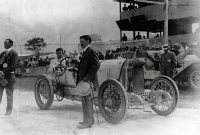
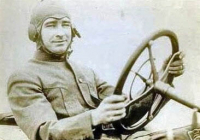
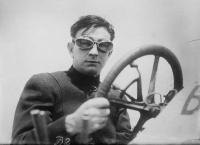
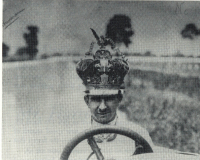
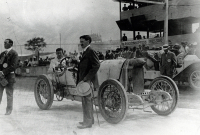
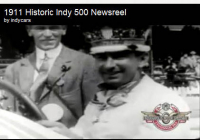
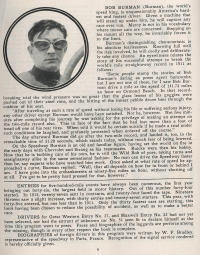
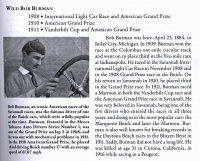

hi, how do you date the chassis of a car with the fedco plate? my fedco plate read
YYY EEE ZERO THRE ONE WWW, so the…